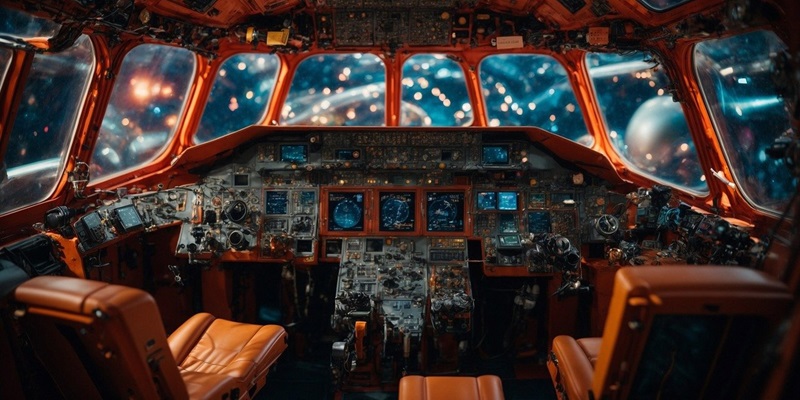Flight safety is of paramount importance in aviation. To further enhance safety measures, MIT scientists have developed Air-Guardian, a groundbreaking deep learning system designed to work in tandem with airplane pilots. By monitoring both the pilot’s attention and the AI system’s focus, Air-Guardian identifies instances where the two do not align, creating a unique human-in-the-loop system that maintains the pilot’s control while allowing the AI to fill in gaps.
Monitoring Human Pilot and AI Focus
Air-Guardian employs a revolutionary method to enhance flight safety by closely monitoring the attention of both the pilot and the AI system. By identifying instances of misalignment in focus, the system ensures that both the human and AI components are working in sync, thereby reducing the risk of errors. This comprehensive monitoring mechanism acts as an additional layer of safety, increasing overall flight safety standards.
Maintaining Pilot’s Control
The human-in-the-loop design of Air-Guardian is a vital aspect of its success. This design ensures that the pilot retains full control while allowing the AI system to provide valuable support. By carefully balancing the roles of human pilots and AI, Air-Guardian maximizes safety without compromising on the importance of human decision-making capabilities and expertise, making it an invaluable tool in aviation.
Eye-Tracking and Heatmaps
Air-Guardian utilizes advanced eye-tracking technology to monitor the attention of the human pilot. This enables the system to gauge the pilot’s focus, ensuring that the pilot is alert and engaged during critical moments of a flight. Additionally, heatmaps are employed to provide a visual representation of the AI system’s attention direction, allowing for easy identification of areas where the AI system is focused.
Deep Reinforcement Learning Model
Deep reinforcement learning is the foundation upon which Air-Guardian is built. This model, commonly used in control systems, allows the AI system to learn and adapt based on real-time data and experiences. By continuously analyzing and optimizing its actions, Air-Guardian improves its ability to assist the pilot in critical flight scenarios, ultimately enhancing the overall safety of air travel.
Liquid Neural Networks (LNNs)
Air-Guardian’s core strength lies in the implementation of Liquid Neural Networks (LNNs), renowned for their explainability. LNNs provide insights into why the AI system makes specific decisions, allowing pilots to better understand the AI’s reasoning and ensuring transparency in critical situations. This explainability fosters trust between humans and AI, paving the way for effective collaboration.
Learning Causal Relationships
An important attribute of LNNs is their ability to learn causal relationships within their data. This means that Air-Guardian can analyze and determine the cause-effect relationships behind various scenarios, enabling it to make informed decisions and mitigate potential risks. By understanding causal relationships, Air-Guardian can provide valuable insights to both pilots and aviation authorities, contributing to further improvements in flight safety practices.
Compactness Advantage of LNNs
The compactness of LNNs is another significant advantage of Air-Guardian. A previous study by the MIT CSAIL team showcased that an LNN with just 19 neurons could accomplish a task typically requiring 100,000 neurons in a classic deep neural network. This compactness not only improves overall system efficiency but also reduces computational requirements, making Air-Guardian a viable solution for real-time applications in aviation and beyond.
Potential Application in Other Scenarios
The insights gained from the development of Air-Guardian hold promise beyond aviation. The collaboration between AI assistants and humans is a growing area of research across various fields. By understanding the principles behind Air-Guardian’s human-AI collaboration, these insights can be applied to scenarios where AI assistants must work alongside humans to enhance safety, efficiency, and decision-making capabilities.
Air-Guardian represents a significant breakthrough in flight safety technology by implementing a human-in-the-loop system that effectively collaborates with AI. By monitoring both the human pilot’s attention and the AI system’s focus, Air-Guardian aims to create a seamless partnership that enhances flight safety without compromising human control. With its explainable Liquid Neural Networks and ability to learn causal relationships, Air-Guardian showcases the potential of human-AI collaboration in ensuring a safer future in aviation and beyond.

